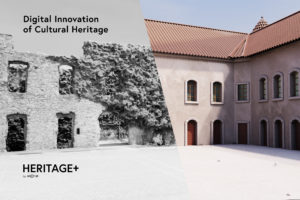In the fascinating world of cultural heritage, the infusion of digital advancements plays a pivotal role in safeguarding, showcasing, and enriching our cultural tapestry. This intentional integration involves the creation of user-centric products and services, utilizing cutting-edge technologies such as augmented reality, 3D scanning, and online platforms. The process extends beyond mere preservation; it seeks to cultivate knowledge and skills that bridge the gap between heritage studies and business strategies.

Digital transformations in cultural heritage provide immersive and user-friendly experiences that effectively convey the essence of values. The utilization of advanced technologies amplifies interactivity, enriches storytelling, and elevates global recognition. This forward-thinking approach not only safeguards cultural heritage in the digital domain but also nurtures the creation of fresh business models, imparting a positive influence on local economies.
Why is digitalization in cultural heritage important?
Let’s explore the allure of digitized cultural heritage for five compelling reasons:
- Attracting New Audiences
Digital technologies captivate fresh audiences by presenting content in visually appealing ways and offering comprehensive explanations, thereby expanding the potential visitor base.
- Preserving Cultural Heritage in the Digital World
As our world becomes increasingly digital, cultural heritage must be present in the digital realm, ensuring its accessibility to a broader audience.
- Greater Interactivity and Involvement
Digital technologies facilitate interactive experiences, transforming the learning process about cultural heritage into a more educational, memorable, and personalized adventure.
- Creating Opportunities for Creative Industries
Digitization allows the exchange of information without risking damage to the original, fostering creativity, research, and the creation of new value.
- Redirecting Visitors
Cultural heritage transforms into a local resource, fostering the development of new destinations, enhancing existing ones, and ensuring a more even distribution of tourism benefits.
Successfully infusing digital solutions into cultural heritage requires a delicate balance of interpretation, technology, sustainability, and heritage protection. Prioritizing user experience, employing high-quality digital materials, ensuring accessibility, and upholding accuracy in information are crucial considerations. The journey of digital innovation unfolds in three steps: conceptualizing the immersive experience, implementing digitalization, and launching and promoting the enchanting cultural voyage. A holistic approach to technology, focusing on enhancing positive features and minimizing drawbacks, ensures thought-provoking, sensorial, and educational experiences that resonate with a diverse audience.






